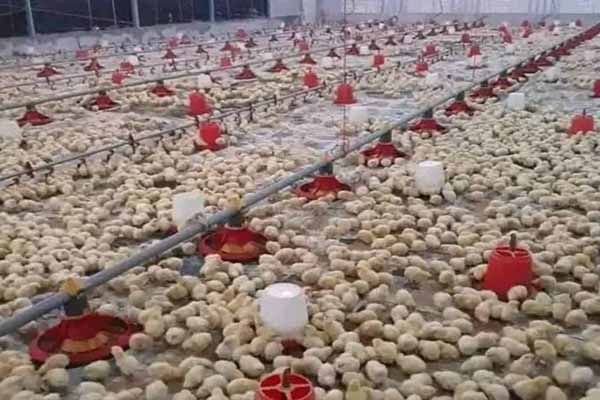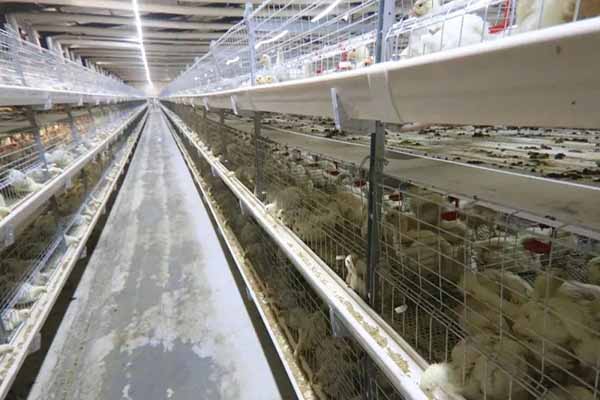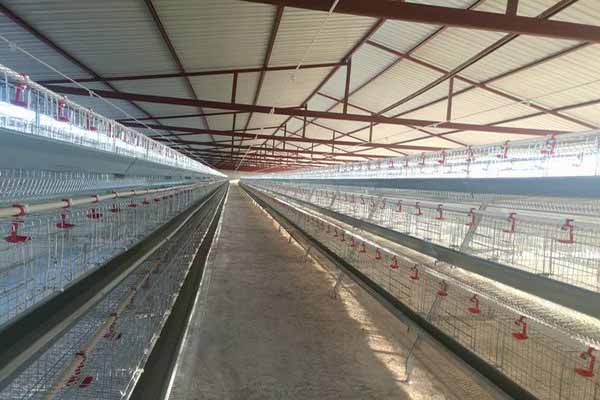Government subsidy policy for automated equipment for chicken farms in Kenya
Time : 2025-07-02
Introduction

The Kenyan government has recognized the importance of the poultry industry in the country’s economic growth and has introduced various policies to support its development. One such policy is the government subsidy for automated equipment for chicken farms. This article delves into the details of this policy, its objectives, benefits, and the impact it has on the poultry industry in Kenya.
Background
Kenya’s poultry industry has experienced significant growth over the past few years. However, the industry still faces challenges such as inefficient production processes, high input costs, and low productivity. To address these challenges, the government has introduced various policies, including the subsidy for automated equipment for chicken farms.
Objectives of the Government Subsidy Policy
The primary objective of the government subsidy policy for automated equipment for chicken farms in Kenya is to enhance the productivity and efficiency of the poultry industry. By providing financial assistance to farmers, the government aims to:
- Improve the quality and quantity of poultry products
- Reduce production costs
- Enhance the overall competitiveness of the poultry industry
- Attract more investors to the poultry sector
Eligibility Criteria
To qualify for the government subsidy, chicken farmers must meet certain criteria. These include:
- Being a registered member of a recognized poultry farmers’ association
- Having a valid business permit
- Providing proof of purchase of automated equipment
- Agreeing to adhere to the government’s guidelines on poultry farming

Types of Automated Equipment Eligible for Subsidy
The government subsidy policy covers various types of automated equipment used in chicken farming. Some of the key equipment include:
- Brooder cabinets
- Automated feeders
- Waterers
- Automated egg collection systems
- Manure management systems
Benefits of Automated Equipment for Chicken Farms

The adoption of automated equipment in chicken farming brings several benefits, including:
- Improved production efficiency: Automated equipment reduces the need for manual labor, leading to higher production output.
- Enhanced biosecurity: Automated systems minimize human contact with birds, reducing the risk of disease outbreaks.
- Reduced labor costs: By automating various processes, farmers can reduce their labor costs.
- Increased profitability: Higher production output and lower costs contribute to increased profitability for farmers.
Impact of the Government Subsidy Policy
Since the introduction of the government subsidy policy for automated equipment, the Kenyan poultry industry has witnessed several positive impacts:
- Increased adoption of automated equipment: Many farmers have taken advantage of the subsidy to purchase and install automated equipment in their farms.
- Improved production efficiency: The adoption of automated equipment has led to increased production efficiency and reduced production costs.
- Enhanced biosecurity: The use of automated equipment has improved biosecurity in chicken farms, leading to fewer disease outbreaks.
- Increased investment in the poultry sector: The subsidy has attracted more investors to the poultry industry, leading to increased investment and growth.
Challenges and Recommendations
Despite the positive impacts of the government subsidy policy, the poultry industry in Kenya still faces several challenges:
- Limited access to credit: Many farmers find it difficult to access credit to purchase automated equipment.
- Lack of training and technical support: Some farmers lack the necessary training and technical support to operate and maintain automated equipment.
- High installation costs: The installation of some automated equipment can be expensive, which may discourage some farmers from adopting it.
To address these challenges, the following recommendations are made:
- Expand access to credit: The government should work with financial institutions to provide affordable credit to farmers for purchasing automated equipment.
- Provide training and technical support: The government should offer training programs and technical support to farmers to ensure they can effectively use and maintain automated equipment.
- Incentivize the installation of automated equipment: The government should consider offering incentives for farmers who install automated equipment, such as tax breaks or additional subsidies.
Conclusion
The government subsidy policy for automated equipment for chicken farms in Kenya has played a crucial role in enhancing the productivity and efficiency of the poultry industry. By addressing the challenges faced by the industry and providing necessary support, the government can further promote the growth and development of the poultry sector in the country.











